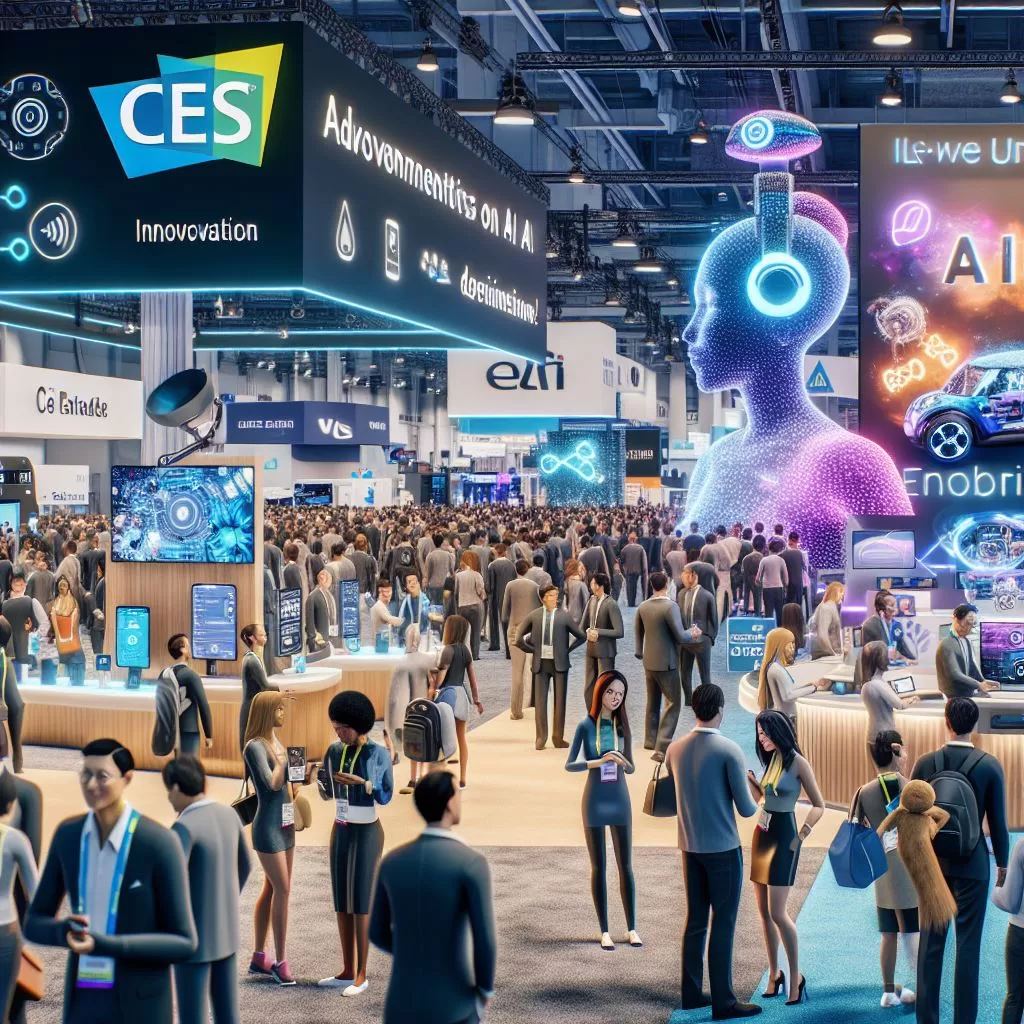The new year is a time for reflection, renewal, and speculation about what the future might hold. Nowhere is this mix of anxiety and forward-looking techno-evangelism more evident than at CES.
Starting January 7, the giant consumer tech showcase will take over Las Vegas, bringing with it a whirlwind of excitement about the latest gadgets and devices. Expect these to be packed with AI features, many of which you’ll likely be asked to wear.
AI has dominated CES—and seemingly every facet of our culture—for the past few years. The 2024 CES saw a surge of AI tech, and while the initial hype may have calmed, the excitement around AI’s potential continues to grow.
“You will certainly see AI wearables from the slew of vendors at CES,” says Jitesh Ubrani, research manager at IDC. “However, unlike last year, where there was a lot of dedicated AI hardware, this year will see AI incorporated into existing devices or as an additional feature rather than the main focus.”
AI Integration
With the major benefits of the current AI boom going to industry giants like OpenAI, Google, and Meta, startups are focusing more on the physical layer of the user experience.
“You’re not going to add any value by creating your own AI model,” says Anshel Sag, principal analyst at Moor Insights and Strategy. “The next step is implementing AI, and the easiest way to do that is with some kind of hardware.”
In 2024, we saw many AI-powered devices showcasing various use cases, though most were just vessels for utilizing AI outside of phones or computers. Some licensed models like ChatGPT, while others used bespoke software, but both paths had challenges. Devices like the Humane AI pin and Rabbit R1 started the trend but were ultimately underwhelming. The wearable Friend necklace, which interacts through a mobile app, faced controversy for its always-listening microphone. Others, like the Plaud.AI pin, hinted at greater ambitions, such as summarizing meetings and potentially attending them on your behalf.
More dedicated AI devices are on the horizon. Some may be useful, while others might use AI interactions to appear innovative or generate interest. CES will showcase new AI gadgets, including necklaces, eyewear, pins, and headphones. Many companies are eager to display their AI-specific earbuds that interact with chatbots. There are even AI-powered sex toys.
Whether these devices will implement chatbots and agents effectively or in new ways remains to be seen. While AI may attract investment, it might not be enough to drive consumer purchases. Chatbots and AI agents don’t yet provide enough value to justify widespread adoption. With AI becoming ubiquitous, what makes your AI earbuds special?
“That’s the problem many startups face; if AI is their differentiator, what happens when everyone has it?” Sag says. “It’s now a basic requirement.”
Wearables and devices designed to provide AI-powered services may have seemed like the next step in AI evolution, but their utility hasn’t pushed boundaries.
“We don’t need dedicated hardware for the features or use cases they’re showing off,” Ubrani says. “Your phone can do most of those things.”
In just a year, AI has gone from being a unique selling point to something more commonplace.
Success Stories
There are AI hardware success stories, such as the Ray-Ban Meta smart glasses, which have succeeded by incorporating AI as one of many features in a device that offers broader use cases like taking pictures and listening to music.
Meta, with its vast resources, can incorporate AI into its services, but smaller manufacturers may struggle to compete. However, they feel the pressure to join the AI trend.
“It’s going to be difficult for smaller startups to survive,” Sag says.
Sag suggests that startups can differentiate themselves by focusing on privacy. While Meta’s smart glasses are successful, the company’s platform collects extensive user data. Competitors like Even Realities or Looktech.AI offer smart glasses with broad user controls over privacy settings, providing an alternative to data-mining platforms.
Regardless of how secure the tech is, people want devices that offer tangible benefits.
“The next wave of AI needs to show what it’s doing for users beyond just having AI,” Sag says. “A lot of AI isn’t driving sales because it’s not significantly changing people’s lives.”


